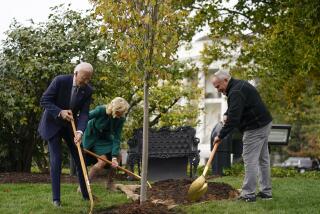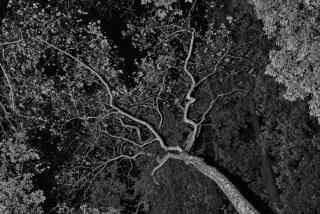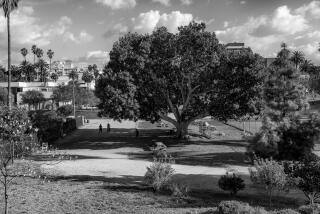Our love of trees has primeval roots
- Share via
Bob Sommer has studied people and trees for the last 16 years. A professor of psychology at UC Davis, Sommer is by nature an inquisitive man, and when the U.S. Forest Service approached him in the mid 1980s to research the people’s attitudes toward city trees, he was sufficiently intrigued. “I originally thought of trees as nothing more than street furniture, like lampposts and hydrants,” he said, “but when I asked about specific trees, I discovered that people have very strong attitudes about them. They referred to them as ‘my tree’ and ‘our tree.’ Or ‘We moved to this block because of the trees.’ ”
As he delved deeper into the subject, he began to realize that the usefulness and beauty of trees are insufficient explanations for such obvious attachments to them. From lullabies (“rock-a-bye baby in the tree top”) to the fear of walking in woods after dark, to arboreal allusions in politics and religion, trees are so rooted in our psyches that Sommer began to wonder if there might be a biological explanation.
It was a question that opened up a cross-cultural study. “We contacted people around the world,” Sommer explained the work, “and wherever we went, the acacia -- and oak-shaped trees -- were the preferred trees. Tall pines were the least liked, even in place where triangular shaped-trees were dominant, like Scandinavia. Everyone thought that the most beautiful tree had a spreading shape.”
Sommer attributes this preference to the role trees once played protecting early humans on the plains of Africa. “Simply put,” he explains, “the people who liked the right kind of trees -- like those growing in savannas -- survived better than people who liked the wrong kinds of trees, and over the millennia we grew conditioned to prefer spreading trees.”







